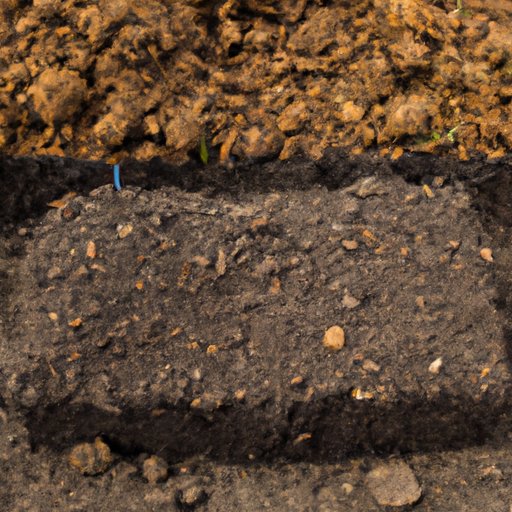Introduction
Having well-drained soil is essential for healthy plants and crops. Poorly drained soil can lead to root rot, nutrient deficiencies, and other issues that can stunt plant growth. This article will provide a comprehensive guide on how to make well-drained soil for your garden, farm, or landscape.

Conduct a Soil Test to Determine Drainage Capabilities
Before beginning any soil amendment project, it is important to conduct a soil test to determine the composition and drainage capabilities of the soil. Knowing the soil type and texture will help you decide what amendments should be used for better drainage. According to the National Gardening Association, “You can purchase a home soil testing kit or bring a sample of your soil to a local cooperative extension office for professional testing.”

Use Organic Matter to Improve Soil Structure and Increase Porosity
Organic matter is key to improving soil structure and increasing porosity. It helps to create air pockets within the soil which allows for better drainage and improved water retention. Examples of organic matter include compost, leaf mold, peat moss, manure, and grass clippings. According to the University of California Agriculture and Natural Resources, “For most soils, adding 2 to 4 inches of organic matter will improve drainage and water holding capacity.”
Incorporating organic matter into the soil is fairly easy. Simply mix it into the top 6 to 8 inches of soil. You can also use a tiller or hand tools to incorporate the organic matter into the soil. For best results, it is recommended to add organic matter twice a year, once in the spring and once in the fall.

Incorporate Sand or Gravel for Better Drainage
Another way to improve drainage is to incorporate sand or gravel into the soil. Sand helps to break up clay soils, while gravel helps to promote good drainage and aeration. When incorporating sand or gravel, it is important to mix it thoroughly into the soil. According to Colorado State University Extension, “It is important to mix the sand or gravel with the soil before planting. This will ensure that the soil has been evenly mixed and the drainage will be uniform.”
Plant in Raised Beds or Containers
For areas that have poor drainage, consider planting in raised beds or containers. Raised beds are elevated above the ground level, allowing for better drainage and improved air circulation. Containers are also a great option as they allow for better drainage and provide an ideal environment for growing plants. According to North Dakota State University Extension, “Raised beds and containers are ideal for growing vegetables and flowers because they provide excellent drainage and warmth for plant roots.”
Amend Clay Soils with Compost or Other Organic Material
Clay soils can be difficult to work with due to their compacted nature. To amend clay soils, it is important to incorporate organic material such as compost or peat moss. This will help to loosen the soil and improve drainage. According to the University of Maryland Extension, “Adding organic matter to clay soils helps to loosen the soil and improve drainage by creating more pore space in the soil.”
Install Drainage Tiles or French Drains
For areas that have persistent drainage problems, consider installing drainage tiles or French drains. Drainage tiles are perforated pipes that are installed below the surface to collect and drain away excess water. French drains are trenches filled with gravel and a pipe that is designed to collect and redirect water away from the area. According to the University of Illinois Extension, “Drainage tiles and French drains are a great way to improve drainage in low-lying areas and can help to prevent water from pooling or flooding.”

Create Mounds or Slopes to Enhance Drainage
Creating mounds or slopes can also improve drainage in certain areas. Mounds are small hills of soil that are created to direct water away from certain areas. Slopes are also a great option as they help to divert water away from buildings and other structures. According to the Ohio State University Extension, “Creating mounds or slopes can help to improve drainage and prevent water from pooling in certain areas.”
Conclusion
Making well-drained soil is an important step in ensuring healthy plants and crops. By following the tips outlined in this article, you can easily improve the drainage in your soil. Remember to always conduct a soil test to determine the composition and drainage capabilities of the soil, use organic matter to increase porosity, incorporate sand or gravel for better drainage, plant in raised beds or containers, amend clay soils with compost or other organic material, install drainage tiles or French drains, and create mounds or slopes to enhance drainage.
With patience and dedication, you can easily create well-drained soil for your garden, farm, or landscape.
(Note: Is this article not meeting your expectations? Do you have knowledge or insights to share? Unlock new opportunities and expand your reach by joining our authors team. Click Registration to join us and share your expertise with our readers.)
